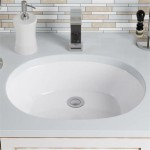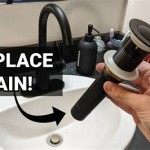How Do I Stop a Dripping Bathroom Faucet?
A persistent dripping faucet, even a seemingly minor one, can be an irritating and wasteful annoyance. Not only does it drive you crazy with its constant sound, but it also contributes to a significant amount of wasted water and money over time. Fortunately, fixing a dripping faucet is often a simple task that can be tackled by most homeowners with basic tools and some patience. This article will guide you through the common causes of a dripping faucet and provide step-by-step instructions on how to stop the drip.
Identifying the Source of the Drip
Before you embark on fixing the dripping faucet, it's essential to determine the root of the problem. The dripping faucet might be caused by a worn-out washer, a loose packing nut, a faulty cartridge, or a damaged O-ring. Here's how to identify the source of the drip:
-
Check the faucet handle:
If the drip happens even when the handle is fully closed, this indicates a problem with the washer or other internal components. -
Inspect the faucet spout:
If the drip originates from the spout itself, the issue might be a loose packing nut or a worn-out O-ring. -
Listen closely to the sound:
If you hear a grinding sound while turning the faucet handle, it could be a sign of a worn-out cartridge.
Fixing a Dripping Faucet with a Worn-Out Washer
The most common culprit behind a dripping faucet is a worn-out washer. The washer, a small rubber or plastic disc, seals the water flow when the faucet handle is closed. Over time, it can become brittle, worn, or cracked, leading to the drip. Here's how to replace a worn-out washer:
-
Turn off the water supply:
Locate the water shut-off valve for the faucet and turn it off completely. -
Remove the faucet handle:
Most faucet handles are secured with a screw underneath. Remove the screw and carefully lift off the handle. -
Remove the packing nut:
The packing nut sits beneath the handle and holds the internal parts of the faucet together. Use pliers or a wrench to loosen and remove the packing nut. -
Remove the stem:
The stem is the metal rod that connects the handle to the faucet's internal parts and is usually held in place by the packing nut. Once the packing nut is removed, the stem should easily come out. -
Replace the washer:
The washer is typically located at the end of the stem. Remove the old washer and replace it with a new one of the same size and material. Ensure the new washer is properly seated. -
Reassemble the faucet:
Reinstall the stem, packing nut, handle, and screw in reverse order. -
Turn the water back on:
Carefully turn the water supply back on and check for leaks.
Fixing a Dripping Faucet with a Loose Packing Nut or O-Ring
If the drip is coming from the faucet spout itself, the issue might be a loose packing nut or a worn-out O-ring. Here's how to fix these problems:
-
Turn off the water supply:
Locate the water shut-off valve for the faucet and turn it off completely. -
Remove the faucet spout:
Some faucets have a decorative cap that covers the spout. Remove this cap if necessary. The spout might be secured with a nut underneath. Use pliers or a wrench to loosen and remove the nut. -
Check the packing nut:
If the packing nut is loose, tighten it with pliers or a wrench. If the nut is worn or damaged, replace it with a new one. -
Check the O-ring:
The O-ring is a small rubber ring that seals the spout to the faucet body. If the O-ring is worn or cracked, replace it with a new one. -
Reassemble the faucet:
Reinstall the spout, nut, and any decorative caps in reverse order. -
Turn the water back on:
Carefully turn the water supply back on and check for leaks.
Fixing a Dripping Faucet with a Faulty Cartridge
If you hear a grinding sound when turning the faucet handle, it could indicate a worn-out cartridge. The cartridge is a part within the faucet that controls the flow of water. It can wear out over time, especially with frequent use. Here's how to replace a faulty cartridge:
-
Turn off the water supply:
Locate the water shut-off valve for the faucet and turn it off completely. -
Remove the faucet handle:
Most faucet handles are secured with a screw underneath. Remove the screw and carefully lift off the handle. -
Remove the cartridge housing:
This usually involves loosening and removing a retaining nut or clip. Once the housing is removed, the cartridge should come out. -
Replace the cartridge:
Obtain a new cartridge that is compatible with your faucet. Install the new cartridge in the housing and reassemble the faucet following the manufacturer's instructions. -
Turn the water back on:
Carefully turn the water supply back on and check for leaks.
These are just a few of the common causes of a dripping faucet and the corresponding solutions. If you are uncomfortable performing any of these repairs, it's always best to call a qualified plumber. However, with a little knowledge and some patience, you can often stop a dripping faucet yourself and save some money in the process.

Part 1 Of 2 How To Fix A Dripping Faucet

How To Fix A Dripping Moen Faucet Howtolou Com

5 Reasons Your Faucet Is Dripping Water How To Fix It

5 Reasons Your Faucet Is Dripping Water How To Fix It

How To Fix A Leaking Bathtub Faucet Diy Family Handyman

How To Fix A Leaking Bathroom Faucet Quit That Drip

How To Fix A Leaking Bathroom Faucet Quit That Drip

How To Fix A Leaky Faucet The Home Depot

Water Dripping From Faucet Why And How To Fix

How To Fix A Leaky Faucet Guides For Every Design And Style
Related Posts







